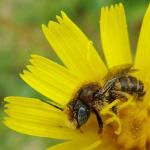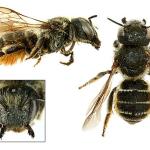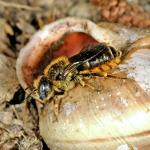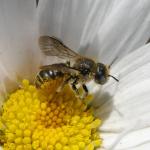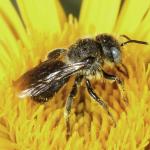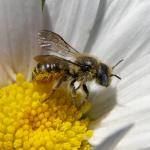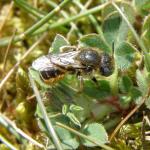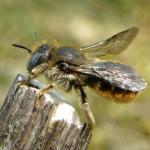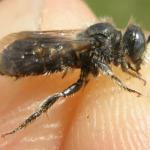Formerly Hoplitis spinulosa. The taxonomy of O. spinulosa has been the subject of considerable debate. Recent genetic work carried out in Switzerland by Mueller, shows that this taxon should correctly be placed within the genus Osmia rather than left within Hoplitis
Found south of a line roughly between the Wash and the Severn, although more common in the south of this region. Overseas: Central and southern Europe.
This species is not regarded as being of conservation concern.
A widespread, although not always frequently found species. It is found in a range of open neutral or calcareous grassland habitats, provided that there are plenty of Asteraceae flowering and a degree of litter build-up around tussocks.This is where the snails, whose shells provide the nest site, live out their lives. Hay-cut and hard-grazed grasslands are not suitable for this bee.
The species is univoltine, but has a long flight period, being found from mid-May to late September.
Nests are made within medium-sized old snail-shells, such as those of Cepea nemoralis. The cells are made within the spiral from chewed plant material.
Males and females of this species are most often visit Asteraceae but many males have been found with orchid pollinia attached to the apical terga (S P M Roberts pers. comm.).
G R Else reports rearing the generalist chalcid wasp Pteromalus apum from a nest of Osmia spinulosa (pers. comm.). No cleptoparasitic aculeates have been reared from this species in Britain.
Proofed: February 2012


